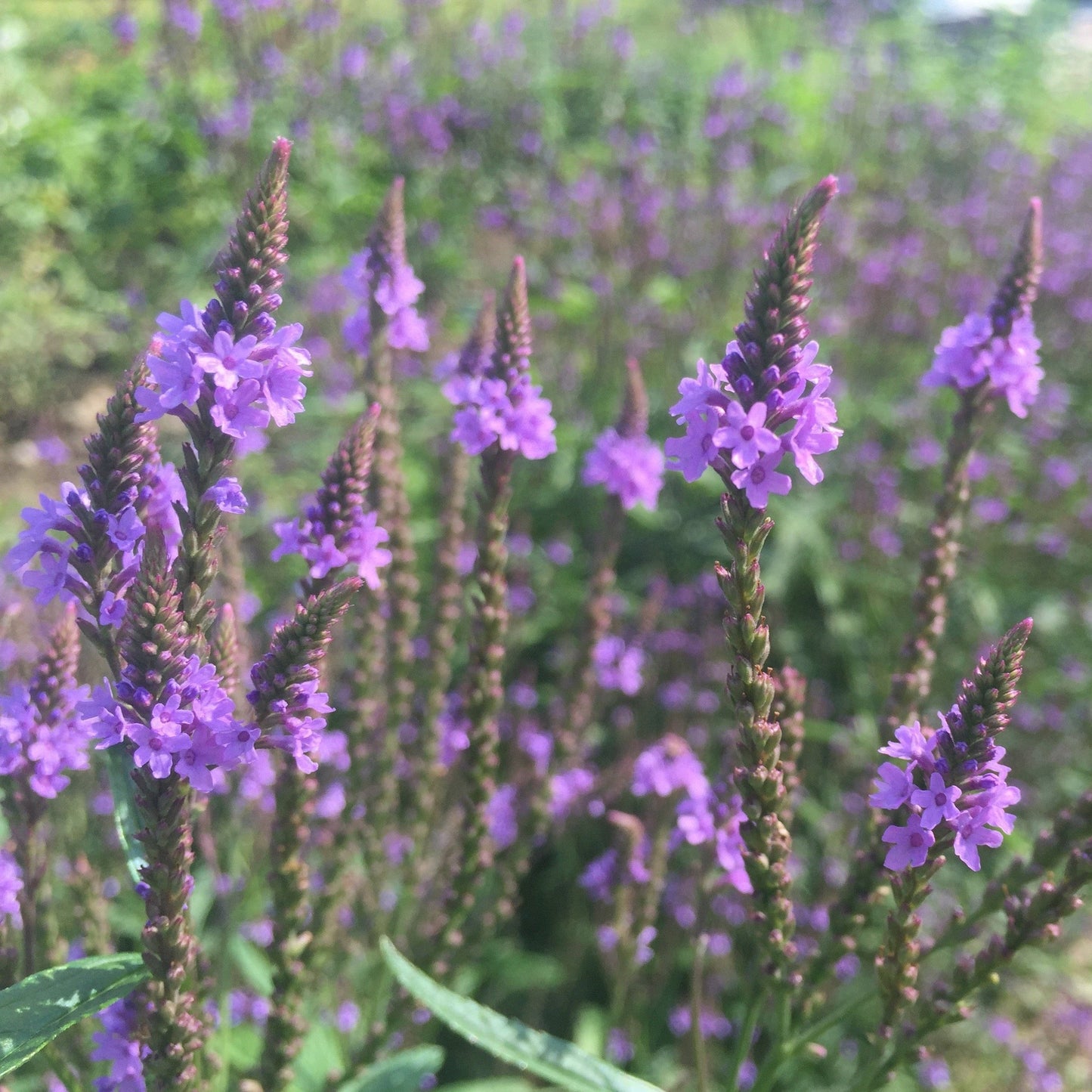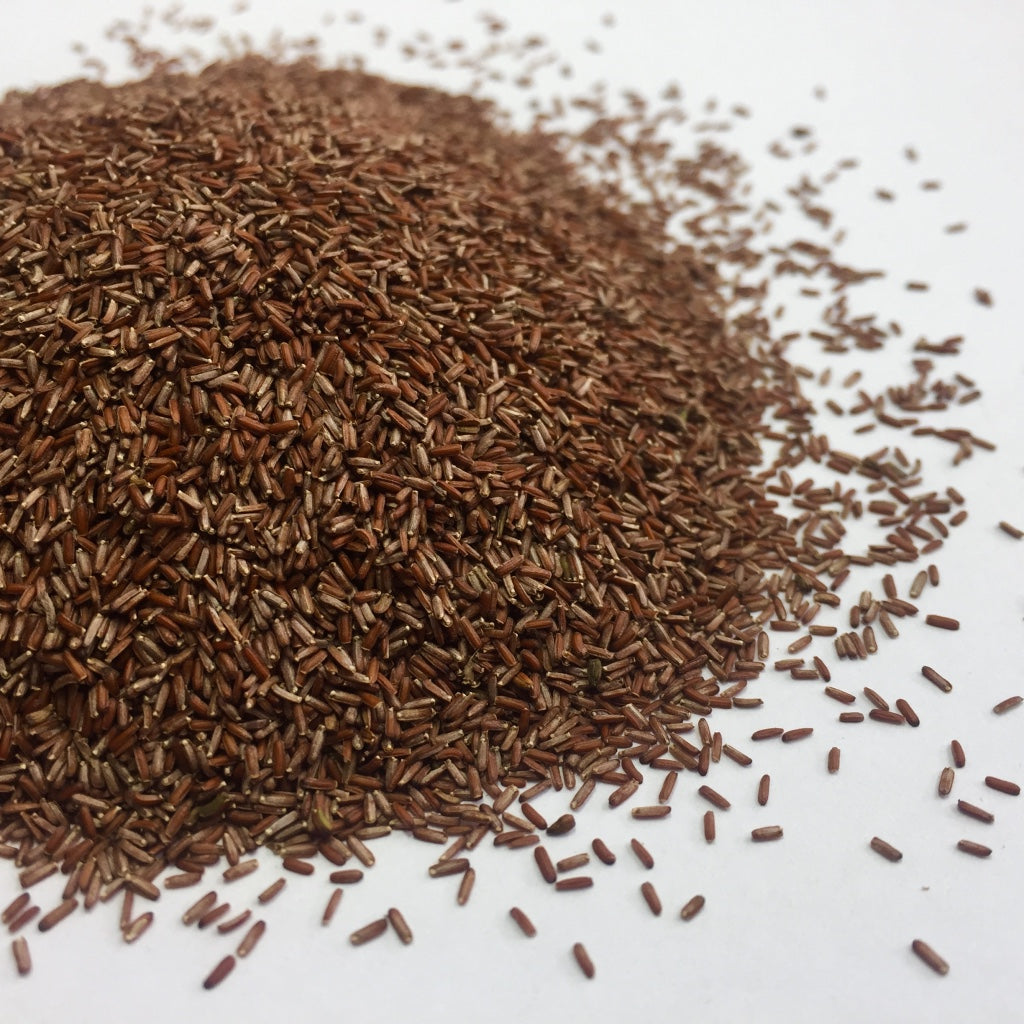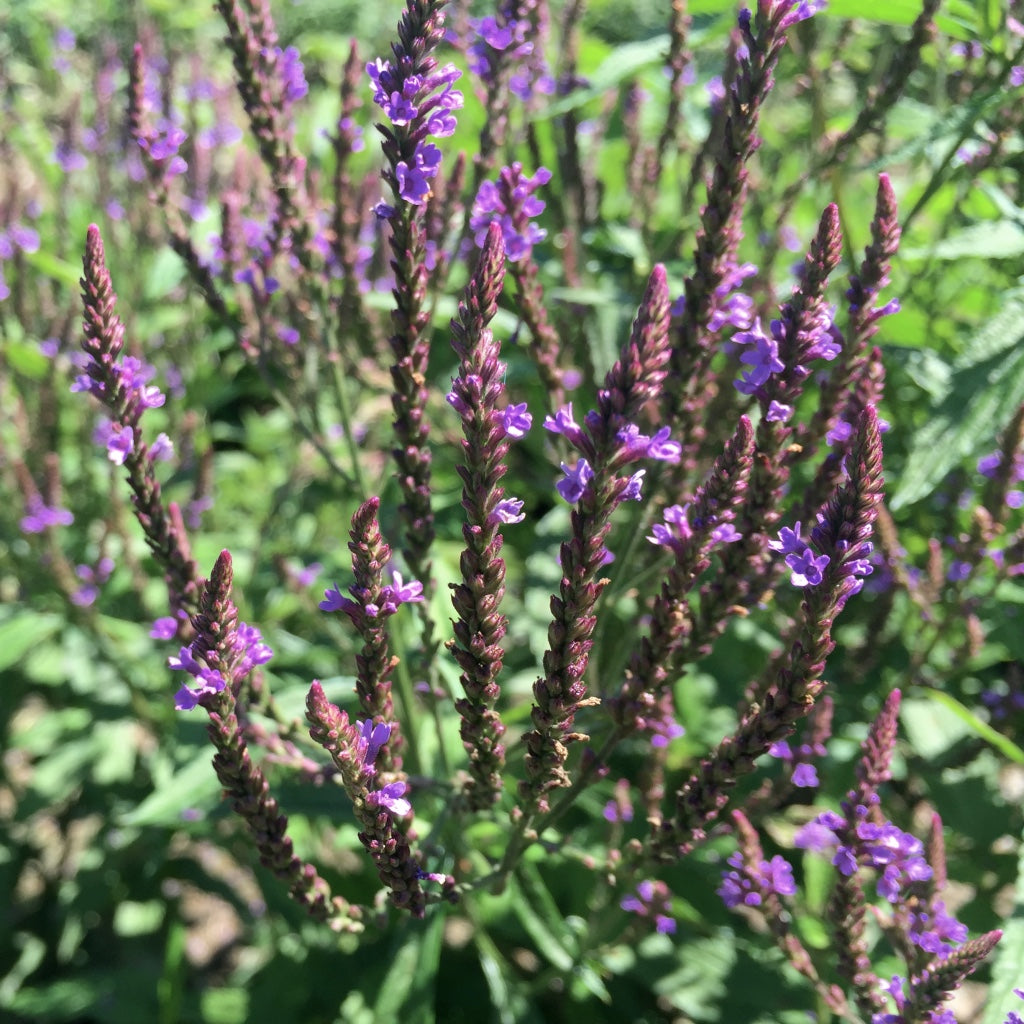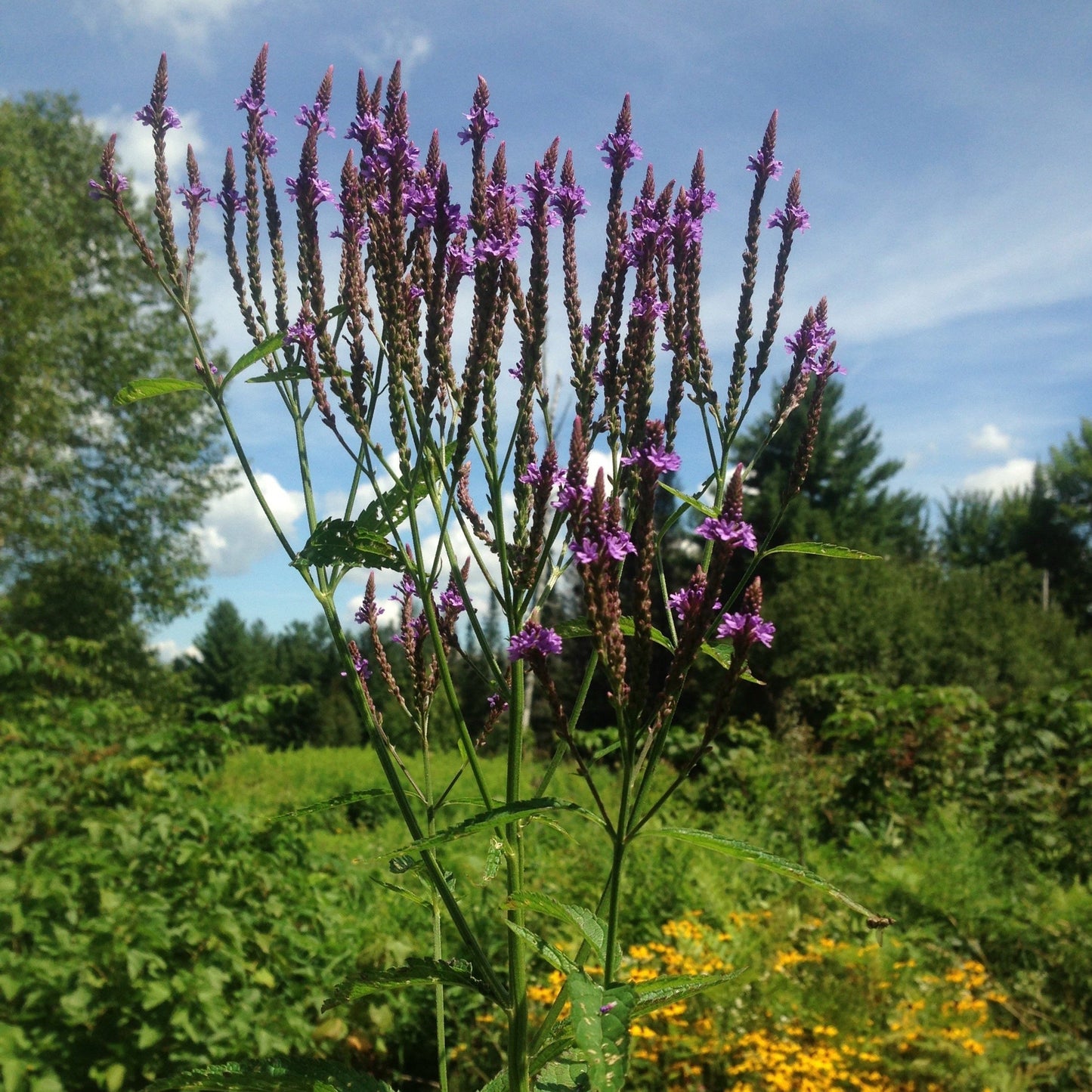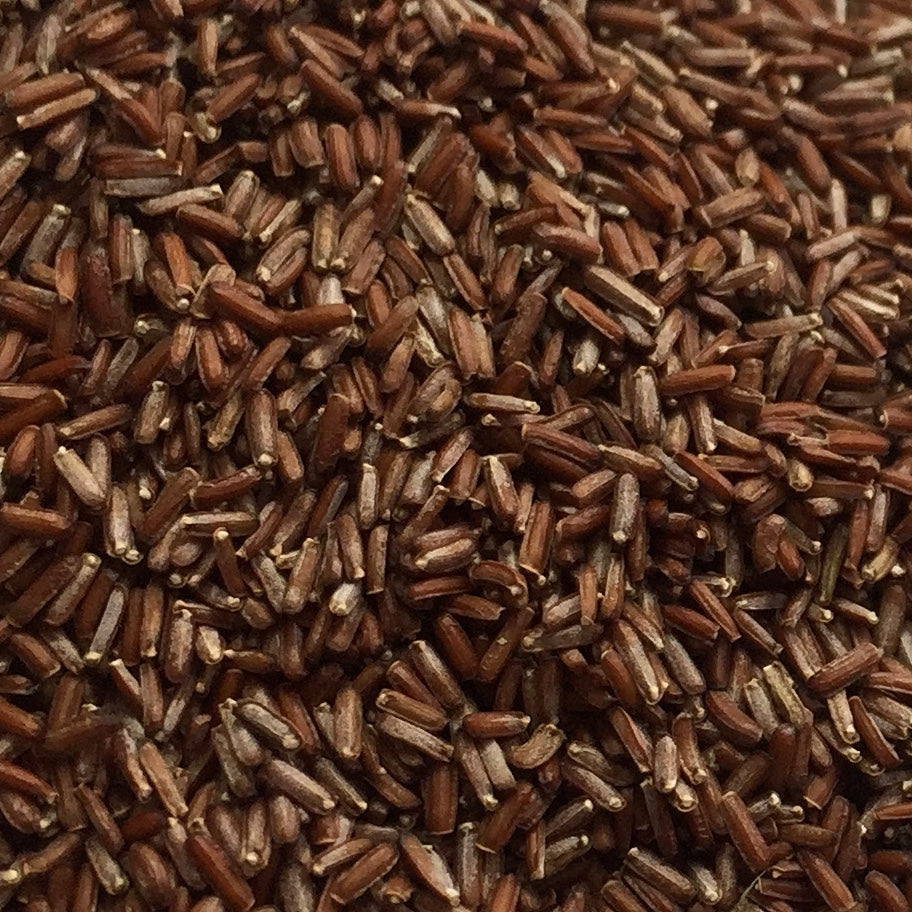Vervain, Blue (Verbena hastata)
List Price: $4.00
Couldn't load pickup availability
The exact origins of this gorgeous perennial are unknown though believed to be from southern Europe in the Mediterranean region. Blue Vervain has now naturalized to other parts of the world, including North America. Set out in the wild, Blue Vervain stands out among other plants with toothed, lance shaped leaves and bright purplish-blue flowers bloom in multiples with elongated flowers arranged on a stem in a candelabra shape. Blue Vervain blooms in mid to late summer and will attract many birds, bees, wasps, flies and beetles.
The use of Vervain for herbal, ceremonial, and spiritual purposes are many and quite ancient. Various cultures throughout the world considered Vervain a particularly special herb. The significance of Vervain as a symbol and healing plant conveyed widespread adoration and was considered a very holy herb and an herb of love. Ancient Egyptians believed Vervain sprang from the tears of the goddess Isis as she mourned the death of the god Osiris. The ancient Druids believed Vervain beheld supernatural powers and worshippers of Thor in Scandinavia used Blue Vervain in ceremonies and rituals calling upon its mystical powers. The Greeks called it hierobotane, “holy plant”, while the Roman version of the name was herba sacra or “sacred herb.” The Romans also used the Vervain plant to bless their altars. The Greek physician, Hippocrates, is said to have recommended Verbena officinalis for fever and for the plague. The Aztec peoples and other Native American tribes also worked with Blue Vervain as a diuretic and as a natural support for headaches, circulatory issues, and insomnia.
Today Vervain is often called upon for muscular tension, headaches and spasms. Vervain has antispasmodic properties, which makes it very beneficial for digestive problems and cramping. Its affinity for helping lessen a fever is also useful with colds and flus.
